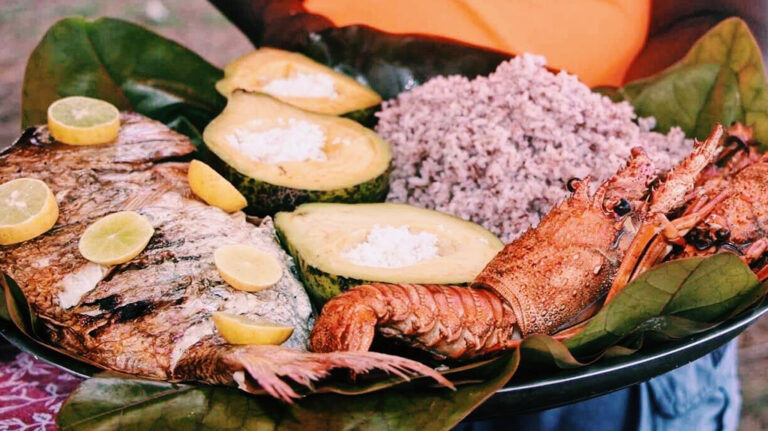Introduction: Malagasy Cuisine and Culture
Malagasy cuisine is a reflection of the diverse cultural influences that have shaped Madagascar’s history and traditions. The island’s food is a blend of African, Asian, and European flavors, with distinct regional variations that reflect the island’s diverse geography and cultural heritage. At the heart of Malagasy cuisine is a deep appreciation for fresh, locally-sourced ingredients, and a culinary philosophy that values simplicity, balance, and harmony.
Understanding Malagasy cuisine is key to understanding the island’s rich cultural traditions. Food is an essential part of Malagasy society, bringing people together to celebrate, mourn, and mark important milestones. From the traditional rice dishes that form the centerpiece of many Malagasy meals to the unique spices and flavors that are used to season local dishes, Malagasy cuisine is both a reflection of the island’s past and a celebration of its present.
Historical Context: The Origins of Malagasy Cuisine
Madagascar’s culinary traditions are rooted in the island’s complex history. The earliest Malagasy settlers were Bantu-speaking people who came from Africa over a thousand years ago. They brought with them a knowledge of rice cultivation and a taste for spicy, flavorful dishes. Later, Arab and Indian traders introduced new spices and cooking techniques, while European colonizers brought with them a taste for French and British cuisine.
Today, Malagasy cuisine is a fusion of these diverse influences, with traditional dishes like the rice-based “vary amin’anana” served alongside sweet and sour pork dishes that reflect Chinese culinary traditions. The use of coconut milk, ginger, and other spices reflects the island’s Indian heritage, while the French influence can be seen in the use of butter and cream in some dishes.
Ingredients and Techniques: How Malagasy Culture Shapes the Food
Malagasy cuisine is characterized by a focus on fresh, locally-sourced ingredients. Rice is a staple food, forming the basis of many meals, while meat and fish are often served as accompaniments. Vegetables and fruits are plentiful, with sweet potato, cassava, and yams all commonly used in Malagasy dishes.
In terms of cooking techniques, Malagasy cuisine is characterized by a preference for simple, slow-cooking methods that allow the flavors of the ingredients to shine through. Dishes are often prepared in a “hot-pot” style, with ingredients simmered together in a sauce until they are tender and flavorful.
Regional Variations: The Diverse Culinary Traditions of Madagascar
Madagascar’s diverse geography and cultural heritage have given rise to a wide range of regional culinary traditions. In the coastal regions, seafood is a staple food, with dishes like “romazava” (a seafood stew) and “akoho sy voanio” (a chicken and coconut milk dish) reflecting the island’s Indian, African, and French influences.
In the highlands, rice is the primary staple food, with dishes like “vary sosoa” (a rice and vegetable dish) and “henakisoa” (a pork stew) reflecting the Bantu traditions of the region. In the south, where the climate is drier, dishes like “tsaramaso” (a beef and vegetable stew) and “ronono” (a cassava and meat dish) are popular.
Cultural Significance: The Role of Food in Malagasy Society
Food is an essential part of Malagasy society, playing a central role in cultural traditions and social events. Meals are often shared with family and friends, and dishes are prepared with care and attention to detail. Food is also used to mark important milestones, with special dishes prepared for weddings, funerals, and other significant events.
In addition to its social significance, food also plays an important role in Malagasy spirituality. Traditional healers often use food and herbs to treat illness, and certain dishes are considered to have spiritual significance. For example, “koba” (a sweet rice cake) is sometimes offered to ancestors as a form of worship.
Conclusion: The Importance of Understanding Malagasy Cuisine and Culture
Understanding Malagasy cuisine is key to understanding the island’s rich cultural traditions. From the spices and ingredients used in local dishes to the cooking techniques and social customs that surround food, Malagasy cuisine is a reflection of the island’s diverse heritage and complex history. By exploring the culinary traditions of Madagascar, we can gain a deeper appreciation for the island’s culture and traditions, and better understand the role that food plays in shaping Malagasy society.

